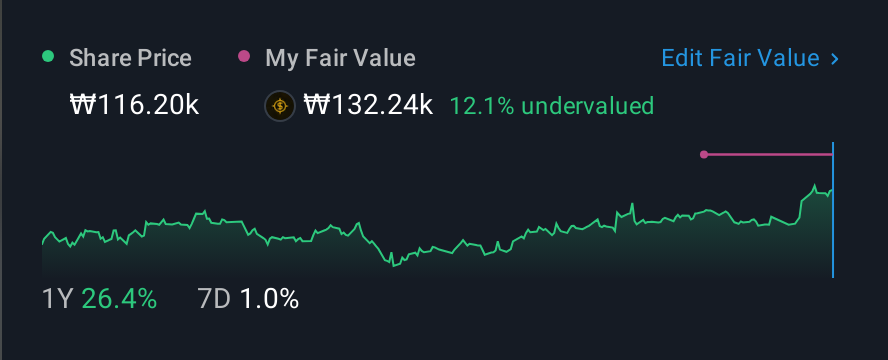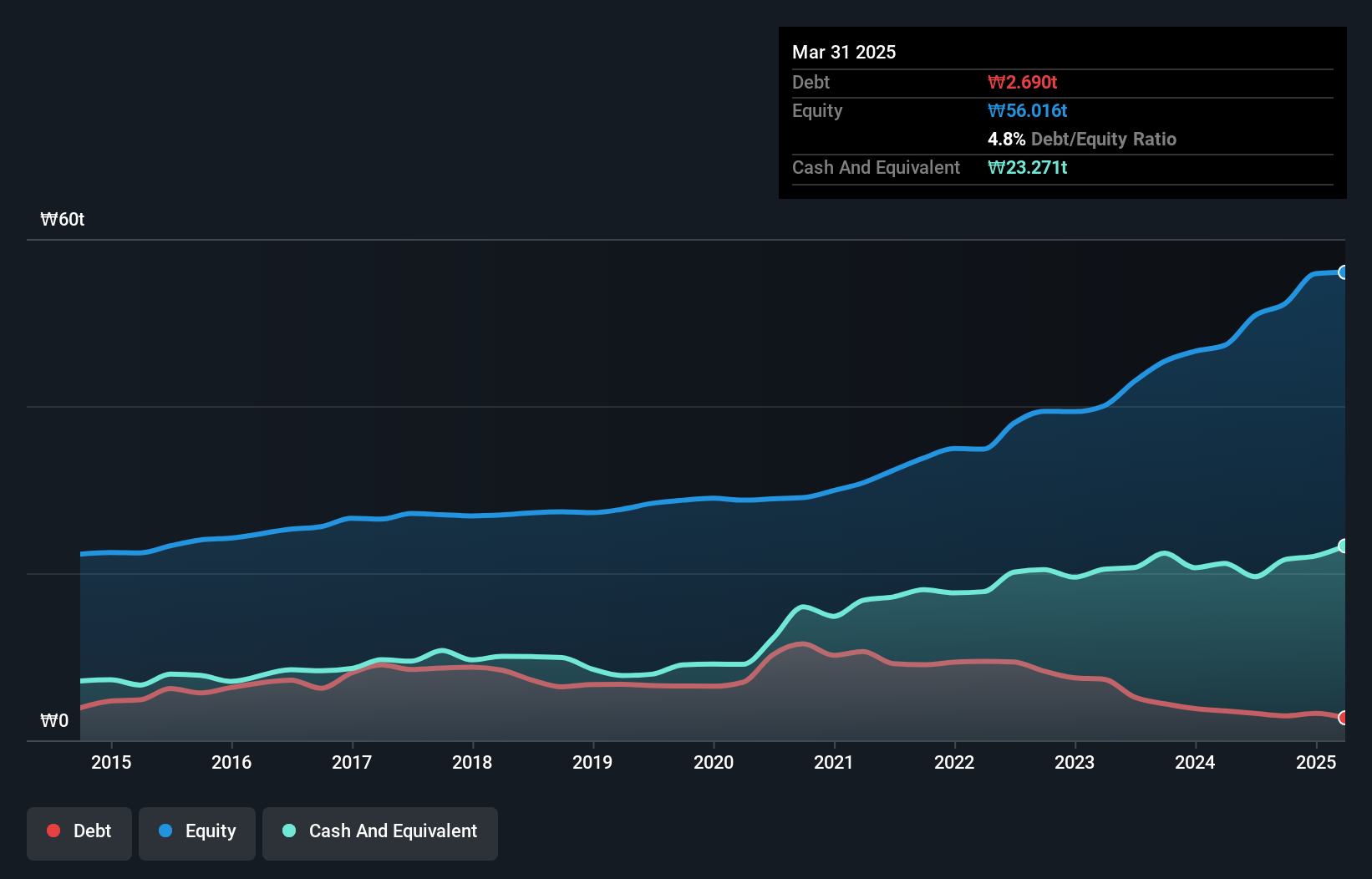
Warren Buffett famously said, 'Volatility is far from synonymous with risk.' So it might be obvious that you need to consider debt, when you think about how risky any given stock is, because too much debt can sink a company. Importantly, Kia Corporation (KRX:000270) does carry debt. But is this debt a concern to shareholders?
When Is Debt Dangerous?
Debt assists a business until the business has trouble paying it off, either with new capital or with free cash flow. Part and parcel of capitalism is the process of 'creative destruction' where failed businesses are mercilessly liquidated by their bankers. However, a more usual (but still expensive) situation is where a company must dilute shareholders at a cheap share price simply to get debt under control. By replacing dilution, though, debt can be an extremely good tool for businesses that need capital to invest in growth at high rates of return. The first step when considering a company's debt levels is to consider its cash and debt together.
What Is Kia's Debt?
As you can see below, Kia had ₩2.69t of debt at March 2025, down from ₩3.52t a year prior. But it also has ₩23t in cash to offset that, meaning it has ₩21t net cash.

How Strong Is Kia's Balance Sheet?
According to the last reported balance sheet, Kia had liabilities of ₩30t due within 12 months, and liabilities of ₩9.95t due beyond 12 months. Offsetting this, it had ₩23t in cash and ₩7.82t in receivables that were due within 12 months. So its liabilities total ₩9.18t more than the combination of its cash and short-term receivables.
While this might seem like a lot, it is not so bad since Kia has a huge market capitalization of ₩40t, and so it could probably strengthen its balance sheet by raising capital if it needed to. However, it is still worthwhile taking a close look at its ability to pay off debt. While it does have liabilities worth noting, Kia also has more cash than debt, so we're pretty confident it can manage its debt safely.
Check out our latest analysis for Kia
Kia's EBIT was pretty flat over the last year, but that shouldn't be an issue given the it doesn't have a lot of debt. There's no doubt that we learn most about debt from the balance sheet. But ultimately the future profitability of the business will decide if Kia can strengthen its balance sheet over time. So if you're focused on the future you can check out this free report showing analyst profit forecasts.
But our final consideration is also important, because a company cannot pay debt with paper profits; it needs cold hard cash. Kia may have net cash on the balance sheet, but it is still interesting to look at how well the business converts its earnings before interest and tax (EBIT) to free cash flow, because that will influence both its need for, and its capacity to manage debt. During the last three years, Kia produced sturdy free cash flow equating to 75% of its EBIT, about what we'd expect. This cold hard cash means it can reduce its debt when it wants to.
Summing Up
While Kia does have more liabilities than liquid assets, it also has net cash of ₩21t. The cherry on top was that in converted 75% of that EBIT to free cash flow, bringing in ₩7.4t. So we don't think Kia's use of debt is risky. Given Kia has a strong balance sheet is profitable and pays a dividend, it would be good to know how fast its dividends are growing, if at all. You can find out instantly by clicking this link.
When all is said and done, sometimes its easier to focus on companies that don't even need debt. Readers can access a list of growth stocks with zero net debt 100% free, right now.
Valuation is complex, but we're here to simplify it.
Discover if Kia might be undervalued or overvalued with our detailed analysis, featuring fair value estimates, potential risks, dividends, insider trades, and its financial condition.
Access Free AnalysisHave feedback on this article? Concerned about the content? Get in touch with us directly. Alternatively, email editorial-team (at) simplywallst.com.
This article by Simply Wall St is general in nature. We provide commentary based on historical data and analyst forecasts only using an unbiased methodology and our articles are not intended to be financial advice. It does not constitute a recommendation to buy or sell any stock, and does not take account of your objectives, or your financial situation. We aim to bring you long-term focused analysis driven by fundamental data. Note that our analysis may not factor in the latest price-sensitive company announcements or qualitative material. Simply Wall St has no position in any stocks mentioned.
About KOSE:A000270
Kia
Manufactures and sells vehicles in South Korea, North America, and Europe.
Flawless balance sheet 6 star dividend payer.
Similar Companies
Market Insights
Community Narratives



